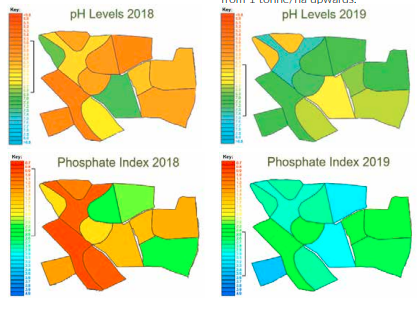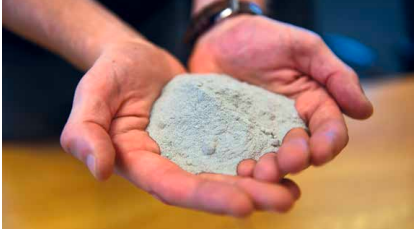Written by Kristy Wesson of Secanim
KalFos is a slow-release calcium phosphate fertiliser produced from the combustion of animal by-products and
bioliquids. It is produced as part of the UK’s safe and responsible treatment of fallen stock and provides a valuable route for the recycling of nutrients.
Replacing costly mineral-based phosphate fertilisers, the majority of which are produced from nonrenewable phosphate rock, the slow-release, acid soluble phosphate contained in KalFos can be beneficial to all cropping systems. Water soluble phosphates are at risk of lock-up or runoff depending on field conditions, and valuable resources can be lost to the aquatic environment, causing pollution of watercourses. The acid-soluble phosphate in KalFos will instead be broken down slowly in the soil, as it is absorbed through acid exudate from roots and their bacterial and fungal associations. This also means that applications can be made to supply multiple cropping year requirements, as the nutrients will be retained in the soil matrix.

In addition to supplying phosphate, KalFos also contains Calcium, Potash, Sulphur and a range of micro-nutrients. The nutrients are truly following a closed loop, as they are concentrated from livestock fed on crops and grass grown in the UK, and are then returned to be utilised for subsequent growing seasons. The product also has a neutralising value of circa 25%, which can be valuable in counteracting the inevitable soil acidification seen with the addition of nitrogen. KalFos is an incredibly cost-effective solution to build up and maintain soil P indices as part of a long-term integrated farming management system. Available in two grades, delivered prices can start from around £50/tonne, depending on tonnage, grade and location. The product is then easily applied using a conventional lime spreader at rates from 1 tonne/ha upwards.

For the best results, the receiving soil should be acidic, and there should be a healthy soil biota population which will maximise the potential uptake of nutrients. The product should ideally not be applied when the soil will be deep ploughed, as the product is best placed in the top 15cm of the soil matrix, in the rooting zone. If min- or zero-till methods are being followed, the product should be applied prior to any surface disturbance, as this will then aid incorporation. Recent trials have shown positive results when KalFos has been applied using variable rates, based on soil sampling results. Soil P indices have been raised across zones, with application rates tailored to zonal sampling results. In some areas, indices have been raised by 2, or up to 183% increase in Olsen-P measurable phosphate. These results show when KalFos is utilised correctly, taking into account soil indices and type, it is a valuable fertiliser for improving soil P supply and minimising potential damage to the surrounding environment.
Secanim Ltd, part of the Saria Group, is pleased to support UK agriculture by producing and supplying KalFos to the farming community.
